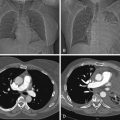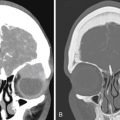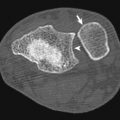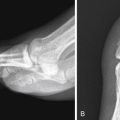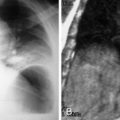Background
Imaging of Patients at Outside Facilities Before Transfer
Early and timely transfer of injured patients to a trauma center capable of definitive care has been shown to decrease mortality. Although long-standing national guidelines from the American College of Surgeons Committee on Trauma recommend simple clinical parameters and radiography to identify patients who benefit from transfer to a Level I or II trauma center, these are not uniformly followed. In fact, in one large study over 50% of severely injured patients received computed tomography (CT) scans before transfer from an outlying hospital. The use of CT in this group was not found to increase morbidity or mortality. The exact reason for noncompliance with these national guidelines is unclear. Concerns about medicolegal liability, expectations of the receiving institutions, a desire by the sending physician to establish a diagnosis before transfer, and local cultural and insurance status have been postulated as reasons.
With such a large proportion of patients receiving outside imaging, access to, and management of, outside images and outside reports by the receiving hospital has become an important issue for emergency departments (EDs) and emergency radiology providers.
Repeat Imaging at the Receiving Hospital
A large proportion of outside imaging is repeated when trauma patients transfer to a major trauma center. Repeat CT rates at the receiving hospital vary, but most studies have found a repeat rate approaching 60%, resulting in an overall repeat imaging cost of almost $3000 per patient. Factors associated with an increased rate of repeat imaging include higher injury severity score, longer stay at the outside hospital, and inability to access the outside imaging. Inadequacy of outside examinations, inability to upload to a picture archiving and communication system (PACS), and “administrative reasons” have all been used to justify repeat imaging. Repeating outside imaging also increases radiation exposure but has not been found to improve patient outcomes.
Techniques Used to Transfer Images Between Facilities
Compact Discs
Traditionally, images were transferred between facilities by sending “hard copy film”: sending either radiographs or printed cross-sectional images with the patient. Presently, the most common transmission method is using CDs. In a recent national survey, 67% of facilities reported that a substantial majority of outside imaging studies arrived via CD. However, several problems complicate the use of CDs for image transfer. The images can only arrive with the patient, precluding teleconsultation when transfer decisions are based on imaging findings. Patients who undergo CT at an outside facility have been found to have an average of 90 minutes longer length of stay before transfer. Part of this delay may be due to the time taken to “burn” the CD before transfer. Once the patient and CD arrive, some institutions may be unable, or unwilling, to upload the outside CDs to their PACS system due to incompatibility or concerns about security. In addition, viewing CDs using the poor or unfamiliar navigation tools that are included with the images may be time consuming. Moreover, CDs may be lost in transit.
When outside CDs can be uploaded to a receiving institution’s PACS, the rate of repeat diagnostic imaging can be reduced. In a study by Sodickson et al, the implementation of a CD importation process and PACS uploading software resulted in a 17% reduction in the rate of subsequent diagnostic imaging (including a 16% reduction in CT) within 24 hours of the importation attempt. Similar results have been found by others. Incompatible CD storage formats have caused PACS uploading problems in the past, but it appears that this is becoming less of a problem, perhaps due to a wide variety of CD-upload software programs that have recently become available. Conformance with the Portable Data for Imaging framework of the Integrating the Healthcare Enterprise (IHE) consortium may contribute to the decrease in incompatibility.
Electronic Image Transfer
Electronic transfer of ED patient images is not a new concept. One of the earliest scientific reports dates back to 1990, when a telephone link was used to transfer CT images of the head. In this study the number of patients ultimately transferred was reduced by 43%. However, in recent years there has been a rapid rise in the use of Internet-based technologies for remote viewing and interpretation of emergency radiologic images. These technologies are ideally suited for image transfer for emergency patients because they offer several potential benefits, as outlined in Box 2-1 . These include the ability to send images before, during, or after patient transfer, greater compatibility with the recipient hospital’s PACS system than CDs or film, ability to resend further images after a patient arrives, easier sharing of outside radiology reports, and transfer of images and reports from the tertiary care center back to the community for future reference.
Ability to Send Images Before or During Patient Transfer
- ▪
Potential to reduce unnecessary patient transfers where management decisions are based on radiologic findings
- ▪
Access to subspecialty image interpretations
- ▪
Receiving hospital can fully assess the nature of injuries before the patient arrives and appropriately mobilize resources (surgeons, operating rooms, interventional radiologists)
- ▪
Avoiding transfer delays while images are burned to CD
Simple Transfer of Outside Images to Receiving Hospital’s Picture Archiving and Communication System
- ▪
Low risk of incompatible images
- ▪
Hospital-wide concurrent viewing of images by multiple clinical services
- ▪
Familiar viewing and navigation tools for outside imaging studies
- ▪
Reduced rate of repeat imaging at the receiving facility
Ability to Resend Images After Patient Arrives
- ▪
Ability to perform retrospective reconstruction of multiplanar reformats, volume-rendered images, or thin-section images by the outside facility as requested by the receiving hospital after the patient arrives, for diagnostic clarification or surgical planning
- ▪
Limited potential for images to get “lost” compared to CD or printed film
Sharing of Outside Image Reports, with the Potential for Real-Time Updates
- ▪
Reduced potential for report discrepancies and medicolegal risk
- ▪
Supports quality improvement initiatives
Transfer of Tertiary Referral Center Images to Community Hospital
- ▪
Baseline imaging available to community hospital for comparison and follow-up
The IHE consortium has implemented a framework for the electronic exchange of health care information between health care providers. The framework dedicated to image and report exchange is the Cross-Enterprise Document Sharing for Imaging (XDS-I).
Ways to Share Images Electronically
As storage, PACS, network, and image-sharing architecture continue to evolve, several different interrelated formats have emerged that provide new ways to share images for transferring patients.
Picture Archiving and Communication Systems With Vendor Neutral Archives
Recent advances in PACS architecture allow some PACS systems to access images that may originate on more than one archive. A vendor neutral archive (VNA) acts as single large storage archive for images that may come from several different PACS vendors or sources. Storage and indexing of these images uses nonproprietary formats. This archive can be accessed by radiologists and physicians using viewers from any number of PACS vendors. This archive may be sited locally or in the “cloud” (i.e., a data center that is located remotely and accessed via the Internet). Health care organizations with multiple sites of practice are ideally suited to the use of VNAs. Images and reports from one site are available across the organization, allowing for seamless transfer and access to radiologic images and medical records. However, because image sharing is at the organizational level, true image sharing for most regional trauma systems is not fully supported.
Virtual Private Networks
A virtual private network (VPN) is a way of connecting two separate computer networks together across the Internet. Usually a VPN is established as a point-to-point connection using encryption. It appears as a private network link to the users. In the ED transfer patient setting, Digital Imaging and Communication in Medicine (DICOM) images from one PACS system (or even a CT or magnetic resonance scanner) in one location are “pushed” down a VPN Internet “tunnel” to another site, arriving at the recipient hospital. Images may then be manually registered and uploaded to the receiving hospital’s PACS system. Most VPN systems involve agreements between individual hospitals, forming a hub-and-spoke infrastructure ( Fig. 2-1 ). This format generally limits the ability to query a remote PACS for images and prevents two nonhub hospitals from sharing images without passing them through the hub.


